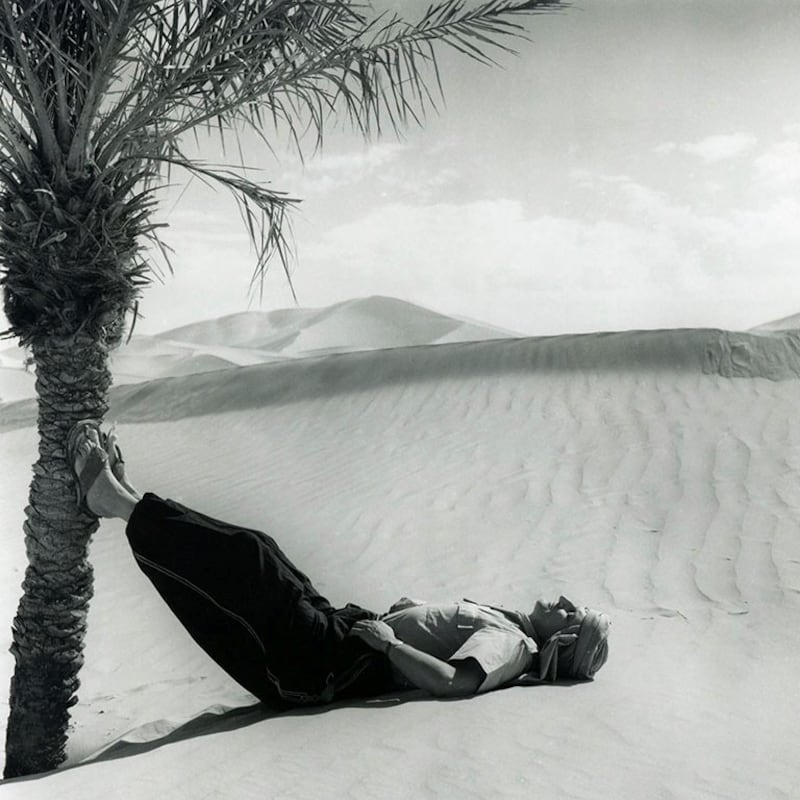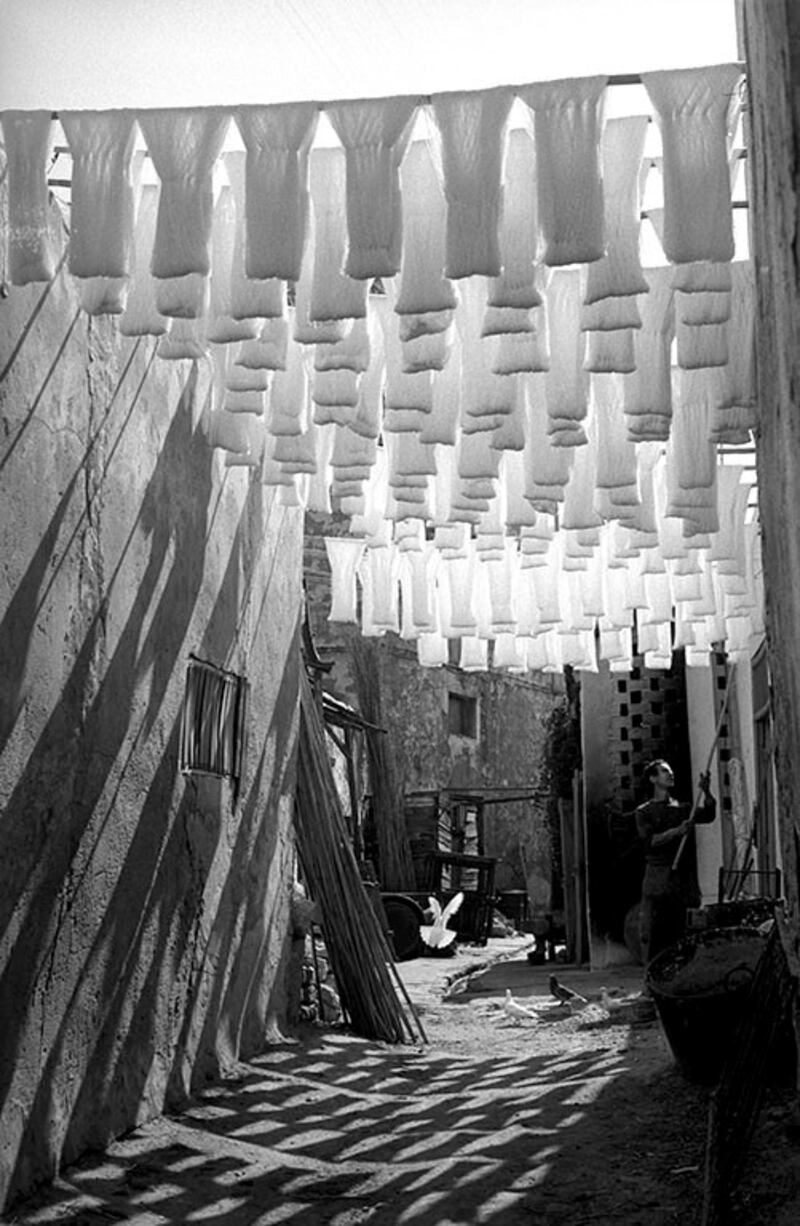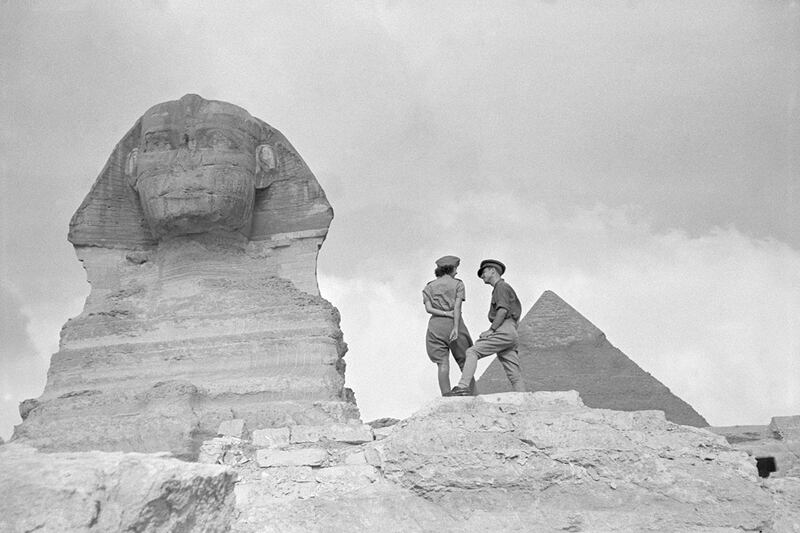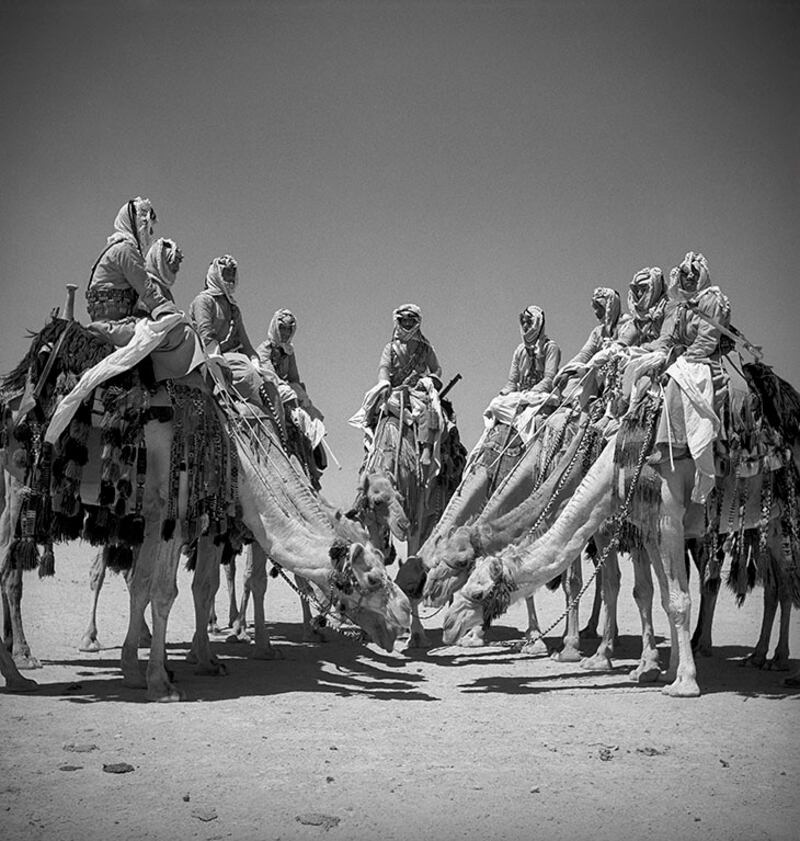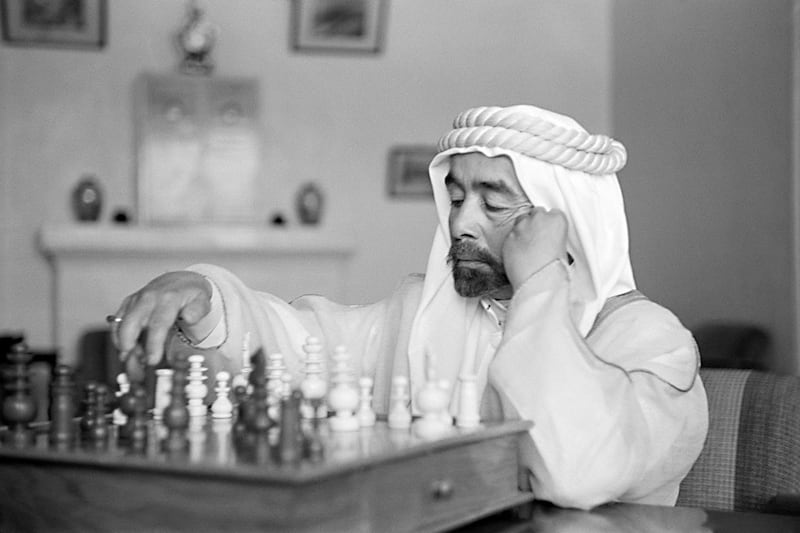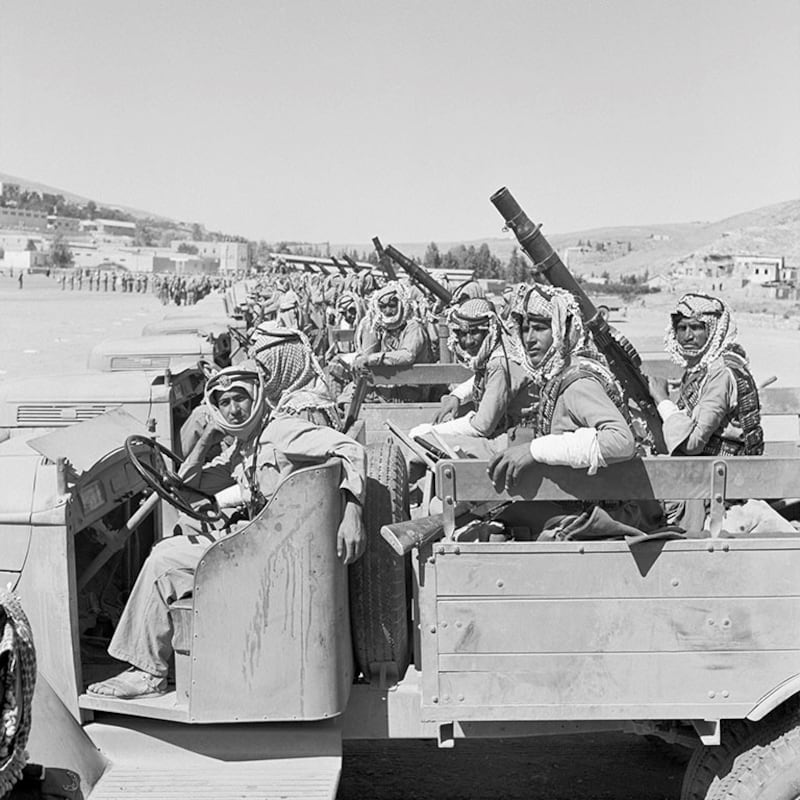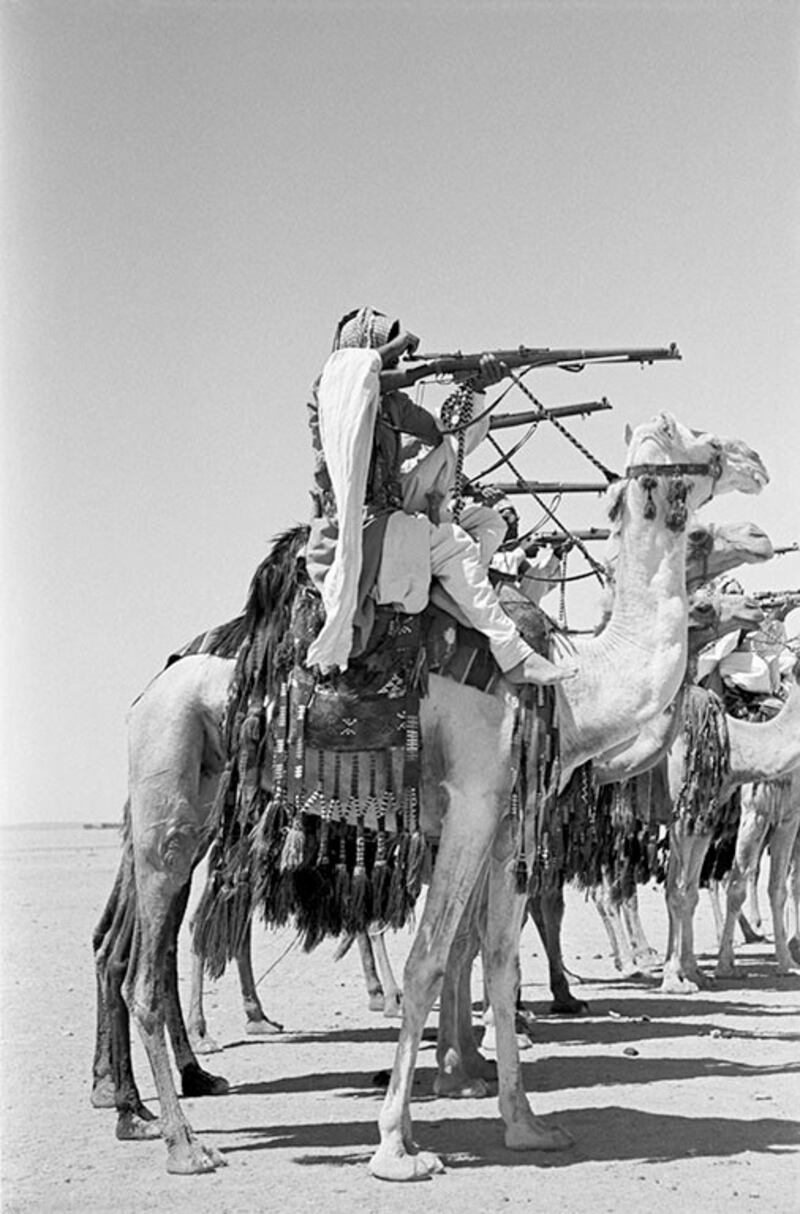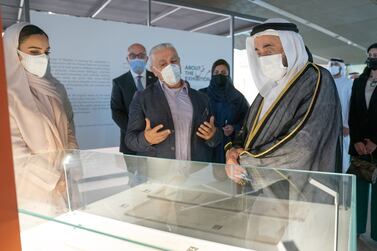“George Rodger belongs to the great tradition of explorers and adventurers,” wrote Henri Cartier-Bresson about his friend and fellow photographer.
Rodger undoubtedly cemented his reputation as a photojournalist by covering the Second World War – from the London Blitz to the liberation of the Bergen-Belsen concentration camp – and by travelling to conflict areas in Iran, Burma, North Africa, and Italy.
During his almost seven-year stint as a war correspondent for Life magazine, the English photographer travelled to 62 countries and covered 18 war campaigns.
Now, a number of his prints, images taken in the Middle East from the 1940s and 1950s, are on view at Masterpiece Art gallery in Dubai.
Photographs from 1941 capture Arab Legion soldiers patrolling the desert on their camels; British Army personnel at the Pyramids of Giza in Egypt, and a portrait of Abdullah bin Al-Hussein of Jordan, the Emir of Transjordan, who would later become king of an independent Jordan.
There are also images from the 1950s, taken in the souqs and streets of Baghdad and Tunis, as well as Hashemite Kingdom soldiers posted in the deserts of Jordan.
In his photos, the subjects are posed naturally. It was part of his objective to represent experiences and scenes in a manner that was “honest and true”, keeping photographs unmanipulated and direct.
Rodger’s beginnings in photography came from his time in the British Merchant Navy when, as a young man, he travelled and learned photography to document his trips.
He returned to Britain in 1936 and worked for the BBC before joining Life in 1939.
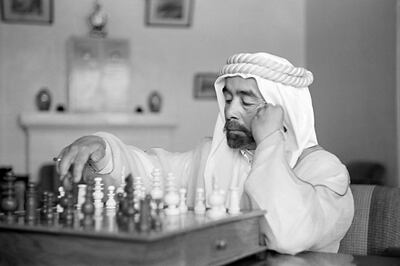
As part of his work for the US magazine, Rodger photographed the Japanese invasion of Burma and joined the Allied campaign in Italy and Normandy, covering D-Day in 1944. He moved with Allied troops towards Germany as they freed the Bergen-Belsen camp just ahead of the declaration of victory in 1945.
Witnessing the war had deeply affected Rodger, and he pledged never to cover conflict again. In 1947, he, along with Cartier-Bresson, Robert Capa and others, founded Magnum Photos, a photographic cooperative that remains highly respected today.
The three assigned themselves specific parts of the world to photograph. Capa went to South-East Asia and Cartier-Bresson to India, while Rodger returned to Africa.
Rodger was known for venturing into far-flung places and challenging environments. His most notable photographs are from his journeys to Sudan and Kenya. During this part of his career, Rodger had his work published in various magazines, including National Geographic, and newspapers.
In 1994, the year before his death, Phaidon Press published a comprehensive book of his photography titled Humanity and Inhumanity: The Photographic Journey of George Rodger, which included 260 images.
The photojournalist died at the age of 87 in England.
George Rodger: Forties Fifties is on view at Masterpiece Art gallery, Dubai, until Thursday, September 16. More information on masterpieceart.co.uk
